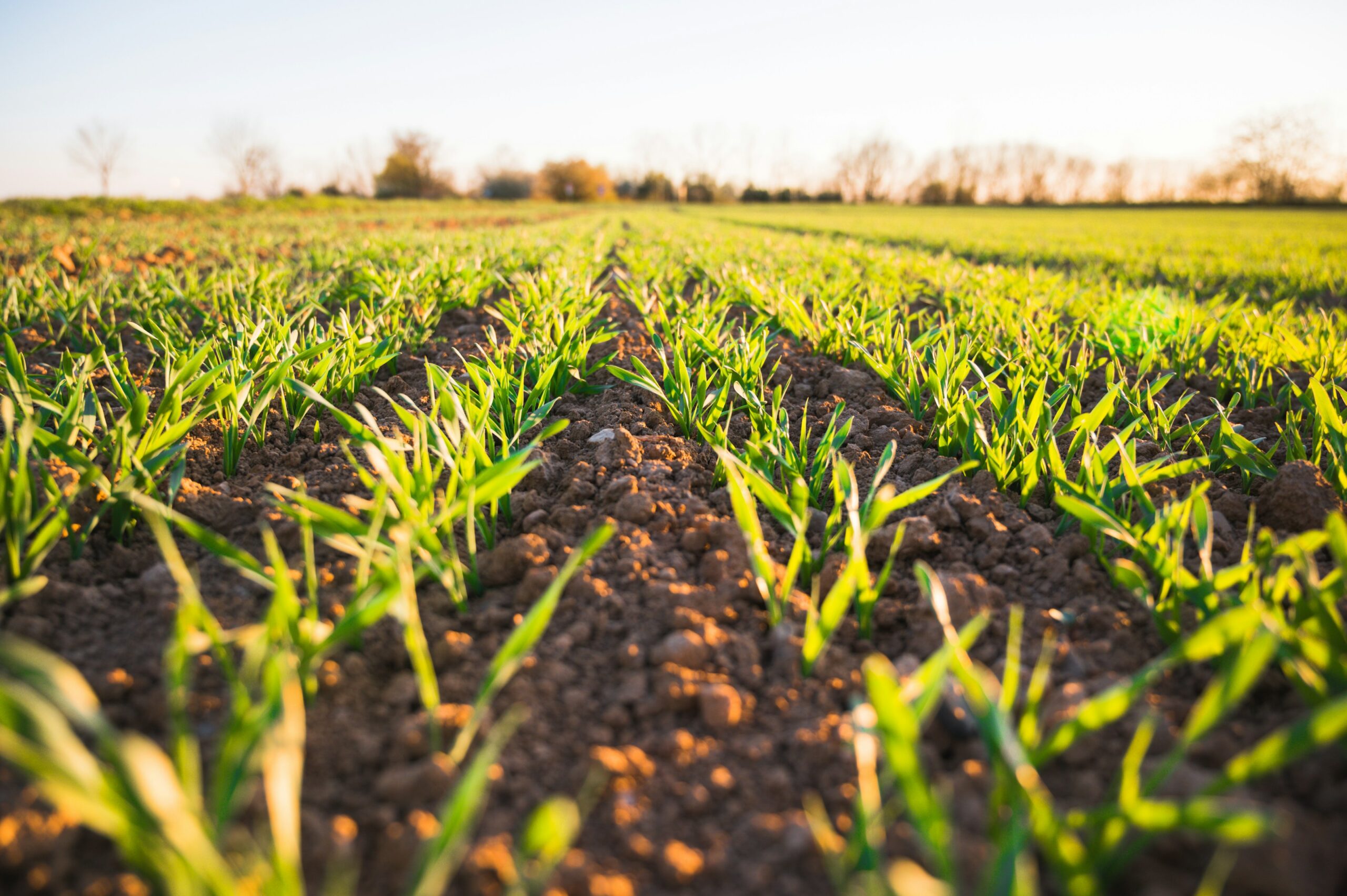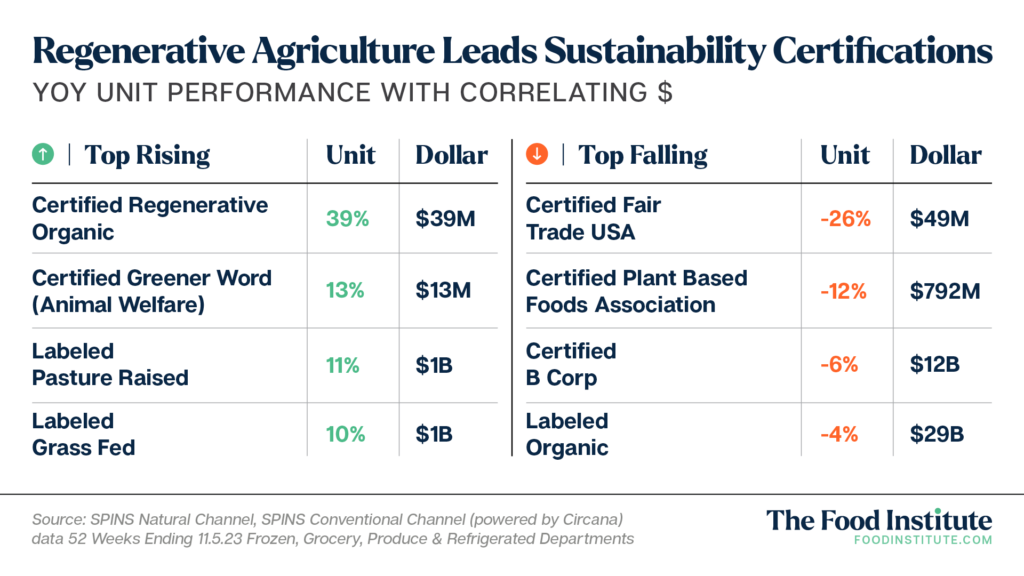Products with Regenerative Organic Certification (ROC) are experiencing significant growth in today’s marketplace while sales linked to other sustainability certifications are decelerating.
According to the SPINS 2024 trends report, sustainability has not yet reached a tipping point for consumers. Shoppers still view sustainability as an optional “initiative” and not as an imperative movement.
Skepticism is also running rampant as consumers and regulators push back against the rising tide of companies utilizing unsubstantiated green claims, or “greenwashing,” to drive sales.
These factors, along with ongoing economic pressure, have triggered sales deceleration across many sustainability certified products in today’s marketplace.
Among labeling initiatives that continue to gain traction, however, Regenerative Organic Certification is the top performer.
But what’s behind this certification — and what makes it stand out?
Regenerative Ag 101
As the SPINS report notes, soil erosion may reduce up to 10% of crop yields by 2050 — the equivalent of removing millions of acres of farmland.
The Regenerative Organic Alliance defines regenerative organic agriculture as a collection of practices that focus on regenerating soil health and the full farm ecosystem. In practice, this can look like cover cropping, crop rotation, low- to no-till, compost, and zero use of persistent chemical pesticides and fertilizers.
The Alliance also adheres to principles including third-party verification and safeguards against deceptive practices in the marketplace to ensure that the certifications they issue are credible and authentic.
These factors make ROC a valuable guide for consumers, says Michael Ham, Co-Founder and President at Wild Orchard Tea Company. Ham pursued this certification for Wild Orchard because he believes that it “goes beyond mere labeling” and “sets the highest standard for safeguarding both human and planetary health.”
Sustainable Vs. Regenerative
The broadness of the sustainability concept — and further, how it differs from regeneration — leaves room for confusion among consumers.
“Sustainability, as commonly understood, aims to balance human needs with environmental considerations, minimizing negative impacts and promoting social equity,” Ham told The Food Institute. “It serves as a baseline, conserving resources and meeting present needs without compromising the ability of future generations to meet their own needs.”
Regenerative practices go beyond sustainability.
“They actively contribute to the healing and restoration of ecosystems, aiming for positive impacts, enhanced biodiversity, and natural regeneration,” he added. “Regenerative agriculture positions itself as a net-positive force, whereas sustainability, while important, may not achieve the desired transformative impact on a large scale.”
The Positives of “Net Positive”
Terminology surrounding greenhouse gas emissions can also be a source of confusion. For instance, some consumers may associate output above “net zero” to be negative for the environment.
“In the scale from net zero to net positive, regenerative agriculture leans towards the net positive end. While achieving carbon neutrality involves balancing emissions with removals, regenerative practices actively contribute to carbon sequestration and storage in the soil,” said Ham. “This means that, over time, regenerative agriculture can result in a net positive impact on the carbon cycle, actively reducing atmospheric carbon levels and reversing climate change.”
Category Outlook is Bright
Implementing regenerative practices into the food supply chain is not without its challenges. Food manufacturers seeking RAC must be prepared for initial transitional costs, supply chain coordination, and education initiatives for employees and consumers.
To Ham, clearing all these hurdles was well worth the investment. After years of increasing awareness about regenerative from the brand, distributor and retail side, the team at Wild Orchard is excited to see this awareness spilling over to consumers.
“Brands that genuinely commit to regenerative agriculture can build strong connections with consumers who prioritize regeneration,” Ham concluded. “This can result in long-term brand loyalty and positive associations with environmental responsibility.”













